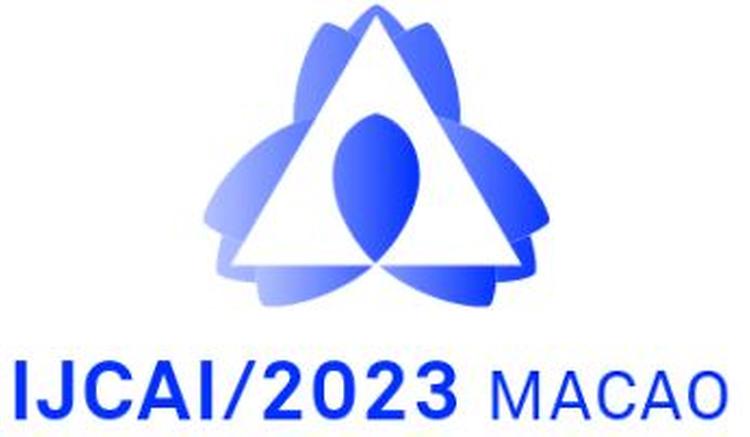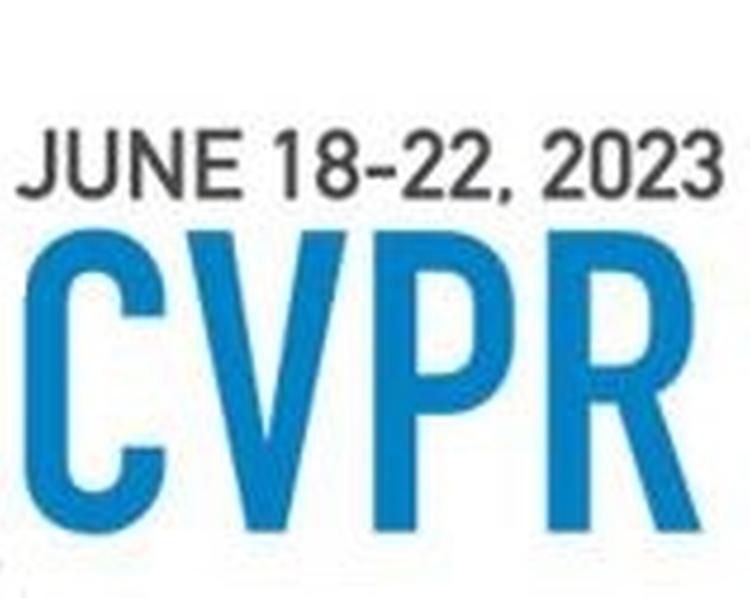-
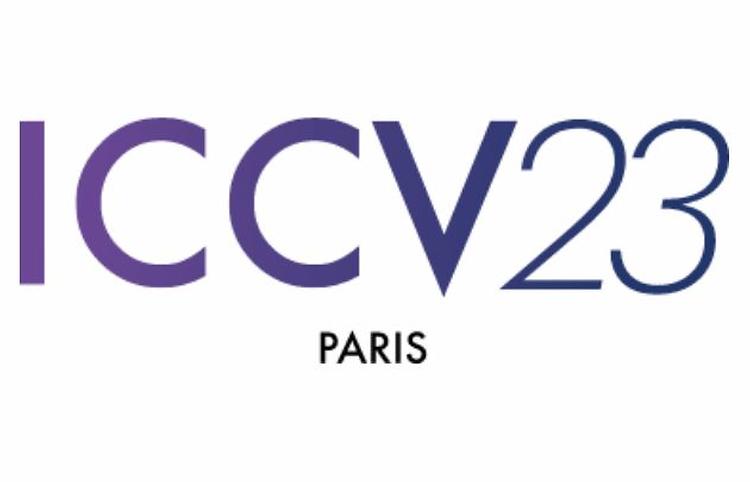
- 이지형 교수 연구실, ICCV 2023 논문 게재 승인
- 정보 및 지능 시스템 연구실(지도교수:이지형) 노순철 (2022년 인공지능학과 석사 졸업)의 논문 " Simple and Effective Out-of-Distribution Detection via Cosine-based Softmax Loss "가 인공지능 및 컴퓨터 비전 분야의 최우수 국제 학술대회(BK21 CS IF=4)인 International Conference on Computer Vision (ICCV 2023)에 게재 승인되었습니다. " Simple and Effective Out-of-Distribution Detection via Cosine-based Softmax Loss " 논문에서는 out-of-distribution(OOD) 감지를 위한 간단하고 효과적인 방법을 제안합니다. 기존 OOD 감지에서는 추가적인 데이터, Input processing 혹은 높은 연산 비용을 요구하는 경우가 많으며, 사용자가 직접 설정해줘야하는 hypher-parameter가 존재하는 점을 문제로 제기하였습니다. 이는 Cosine- based Softmax Loss로 훈련된 분류 모델에서 feature norm과 Mahalanobis 거리를 결합한 간단하면서도 효과적인 OOD 감지 방법을 제안합니다. 이는 추가 데이터를 사용하지 않아 실용적이며, Input processing을 사용하는 것보다 3배 빠른 속도를 보여줍니다. [Abstract] Deep learning models need to detect out-of-distribution (OOD) data in the inference stage because they are trained to estimate the train distribution and infer the data sampled from the distribution. Many methods have been proposed, but they have some limitations, such as requiring additional data, input processing, or high computational cost. Moreover, most methods have hyperparameters to be set by users, which have a significant impact on the detection rate. We propose a simple and effective OOD detection method by combining the feature norm and the Mahalanobis distance obtained from classification models trained with the cosine- based softmax loss. Our method is practical because it does not use additional data for training, is about three times faster when inferencing than the methods using the input processing, and is easy to apply because it does not have any hyperparameters for OOD detection. We confirm that our method is superior to or at least comparable to state- of-the-art OOD detection methods through the experiments.
-
- 작성일 2023-07-21
- 조회수 1757
-
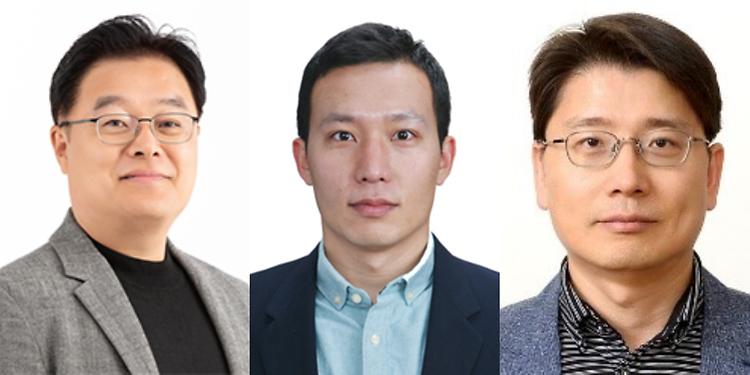
-

- 이지형 교수 연구실, ACL 2023 논문 3편 게재 승인
- 정보 및 지능 시스템 연구실(지도교수: 이지형)의 논문 3편이 세계 최고 권위의 자연어처리 학술대회 (BK IF=4) “The 61st Annual Meeting of the Association for Computational Linguistics (ACL’23)”에 게재 승인되었습니다. 논문 #1: “DIP: Dead code Insertion based Black-box Attack for Programming Language Model”, ACL 2023 (인공지능학과 석박통합과정 나철원, 소프트웨어학과 박사과정 최윤석) 논문 #2: “BLOCSUM: Block Scope-based Source Code Summarization via Shared Block Representation”, Findings of ACL 2023 (소프트웨어학과 박사과정 최윤석, 인공지능학과 석사과정 김효준) 논문 #3: “CodePrompt: Task-Agnostic Prefix Tuning for Program and Language Generation”, Findings of ACL 2023 (소프트웨어학과 박사과정 최윤석) (논문 #1) “DIP: Dead code Insertion based Black-box Attack for Programming Language Model” 논문에서는 소스코드를 처리하는 매우 큰 사전학습모델(Large-scale pre-trained models)에 대한 적대적 공격(Adversarial Attack) 방법을 제안합니다. 기존 공격방법인 변수명을 변경하는 Sampling 기반의 방법론은 매우 많은 시도와 낮은 공격 성공률로 비효율적이며, 특히 소스코드의 특징인 컴파일 가능성을 완전히 보존하지 못하는 문제를 제기하였습니다. 이를 해결하기 위해, 소스코드에 영향을 미치지 않는 Dead code를 삽입하는 방법론을 채택하였습니다. 언어를 처리하는 대부분의 사전학습 모델은 Attention mechanism을 갖는 트랜스포머 기반 구조이기 때문에, 적대적 공격의 효율성을 높이기 위하여 어텐션 점수(Attention score)를 활용합니다. 제안된 방법은 3가지 사전학습 모델에 각 3가지 데이터를 미세조정(fine-tuning)한 총 9가지 타겟 모델에 대하여 매우 우수한 공격 성능을 보입니다. [Abstract] Automatic processing of source code, such as code clone detection and software vulnerability detection, is very helpful to software engineers. Large pre-trained Programming Language (PL) models (such as CodeBERT, GraphCodeBERT, CodeT5, etc.), show very powerful performance on these tasks. However, these PL models are vulnerable to adversarial examples that are generated with slight perturbation. Unlike natural language, an adversarial example of code must be semantic-preserving and compilable. Due to the requirements, it is hard to directly apply the existing attack methods for natural language models. In this paper, we propose DIP (Dead code Insertion based Black-box Attack for Programming Language Model), a high-performance and efficient black-box attack method to generate adversarial examples using dead code insertion. We evaluate our proposed method on 9 victim downstream-task large code models. Our method outperforms the state-of-the-art black-box attack in both attack efficiency and attack quality, while generated adversarial examples are compiled preserving semantic functionality. (논문 #2) “BLOCSUM: Block Scope-based Source Code Summarization via Shared Block Representation” 논문에서는 소스코드를 개발자가 한눈에 이해할 수 있는 주석 형태의 자연어로 요약해주는 방법을 제안합니다. 양질의 요약문을 생성하기 위하여, 소스코드 블록의 다양한 구조를 표현함으로써 블록 범위 정보를 활용하는 공유 블록 표현(shared block representation)을 사용합니다. 소스 코드의 기본 구조 요소인 코드 블록을 활용하여 두 가지 방법을 설계했습니다. 첫 번째 방법인 공유 블록 위치 임베딩(position embedding)은 코드 블록의 구조를 효과적으로 나타내고 코드와 AST 인코더 간의 상관관계를 합치는 데 사용됩니다. 또한, 소스 코드의 블록 및 전역 종속성과 같은 풍부한 정보를 학습하기 위해 간단하면서도 효과적인 AST 변형을 재구성했습니다. 실험 결과, 제안방안의 우수성을 입증하고 코드에서 블록 범위 정보의 중요성을 확인했습니다. [Abstract] Code summarization, which aims to automatically generate natural language descriptions from source code, has become an essential task in software development for better program understanding. Abstract Syntax Tree (AST), which represents the syntax structure of the source code, is helpful when utilized together with the sequence of code tokens to improve the quality of code summaries. Recent works on code summarization attempted to capture the sequential and structural information of the source code, but they considered less the property that source code consists of multiple code blocks. In this paper, we propose BLOCSUM, BLOck scope-based source Code SUMmarization via shared block representation that utilizes block-scope information by representing various structures of the code block. We propose a shared block position embedding to effectively represent the structure of code blocks and merge both code and AST. Furthermore, we develop variant ASTs to learn rich information such as block and global dependencies of the source code. To prove our approach, we perform experiments on two real-world datasets, the Java dataset and the Python dataset. We demonstrate the effectiveness of BLOCSUM through various experiments, including ablation studies and a human evaluation. (논문 #3) “CodePrompt: Task-Agnostic Prefix Tuning for Program and Language Generation” 연구에서는 프로그램 및 언어 생성 작업을 위한 작업에 구애받지 않는(Task-agnostic) 프롬프트 튜닝 방법인 CodePrompt를 제안합니다. CodePrompt는 프로그램 및 언어를 위한 사전학습모델(Pre-train Models)의 사전 훈련 및 미세 조정 사이의 간극을 메우기 위해 입력 종속 프롬프트 템플릿을 결합하고, 사전학습모델의 매개 변수(parameters)를 효율적으로 업데이트하기 위해 말뭉치 특정 접두사 튜닝을 사용합니다. 또한, 제한된 접두사 길이에 대한 보다 풍부한 접두사 단어 정보를 제공하기 위한 다중 단어 접두사 초기화 방법을 제안했습니다. 제안 방법은 전체 데이터와 저자원 환경 뿐만 아니라 cross-domain 환경에서도 3가지 프로그램 및 언어 생성 작업(Program and Language Generation)에서 효과적임을 입증했습니다. [Abstract] In order to solve the inefficient parameter update and storage issues of fine-tuning in Natural Language Generation (NLG) tasks, prompt-tuning methods have emerged as lightweight alternatives. Furthermore, efforts to reduce the gap between pre-training and fine-tuning have shown successful results in low resource settings. As large Pre-trained Language Models (PLMs) for Program and Language Generation (PLG) tasks are constantly being developed, prompt tuning methods are necessary for the tasks. However, due to the gap between pre-train and fine-tuning different from PLMs for natural language, a prompt tuning method that reflects the traits of PLM for program language is needed. In this paper, we propose a Task-Agnostic prompt tuning method for the PLG tasks, CodePrompt, that combines Input-Dependent Prompt Template (to bridge the gap between pre-training and fine-tuning of PLMs for program and language) and Corpus-Specific Prefix Tuning (to efficiently update the parameters of PLMs for program and language). Also, we propose a method to provide more rich prefix word information for limited prefix lengths. We prove that our method is effective in three PLG tasks, not only in the full-data setting, but also in the low-resource setting and cross domain setting.
-
- 작성일 2023-05-08
- 조회수 2080
-
- 우사이먼 교수 연구실 IJCAI 2023 논문 게재 승인
- DASH 연구실 (지도교수: 우사이먼) 김정호 (2023년 인공지능학과 석사 졸업), 이한빈 (2022년 인공지능학과 석사 졸업)의 “IMF: Integrating Matched Features using Attentive Logit in Knowledge Distillation” 논문이 인공지능 분야 최우수 학회 (BK IF=4) International Joint Conferences on Artificial Intelligence (IJCAI) 2023 에 게재 승인되어 8월에 발표될 예정입니다. 지식 증류(Knowledge distillation, KD)는 교사 모델의 지식을 학생 모델에 전달하여, 학생 모델의 성능을 향상시키는 방법이다. 소프트맥스 분포 및 네트워크 중간 특징 매칭 기반 지식 증류 방법은 다양한 작업에서 성능 향상을 보였지만, 학생 모델의 제한된 모델 용량으로 인해 일부분의 성능 개선만 가능하다. 본 연구에서는 학생 모델의 한계를 해결하기 위해 새로운 유연한 지식 증류 프레임워크, Attentive logit을 사용한 Integrating Matched Feature (IMF)를 제안한다. 본 방법은 중간 특징 증류기(IFD)를 도입하여 교사 모델의 지식을 직접 학생 모델의 가지 네트워크로 증류함으로써 학생 모델의 전반적인 성능을 향상시킨다. 여러 가지 네트워크는 Attentive Logit에 의해 선생 모델의 직접적인 증류하에 효과적으로 결합된다. 본 방법은 학생 모델의 일부 블록과 IFD를 사용하여 본래의 학생 네트워크와 동일하거나 적은 수의 파라미터로 추론하며, 다양한 데이터셋에서 다른 최신 방법론들보다 동일한 파라미터 및 연산량 하에 높은 성능 향상을 보인다. Knowledge distillation (KD) is an effective method for transferring the knowledge of a teacher model to a student model, that aims to improve the latter's performance efficiently. Although generic knowledge distillation methods such as softmax representation distillation and intermediate feature matching have demonstrated improvements with various tasks, only marginal improvements are shown in student networks due to their limited model capacity. In this work, to address the student model's limitation, we propose a novel flexible KD framework, Integrating Matched Features using Attentive Logit in Knowledge Distillation (IMF). Our approach introduces an intermediate feature distiller (IFD) to improve the overall performance of the student model by directly distilling the teacher's knowledge into branches of student models. The generated output of IFD, which is trained by the teacher model, is effectively combined by attentive logit. We use only a few blocks of the student and the trained IFD during inference, requiring an equal or less number of parameters. Through extensive experiments, we demonstrate that IMF consistently outperforms other state-of-the-art methods with a large margin over the various datasets in different tasks without extra computation.
-
- 작성일 2023-05-03
- 조회수 1605
-
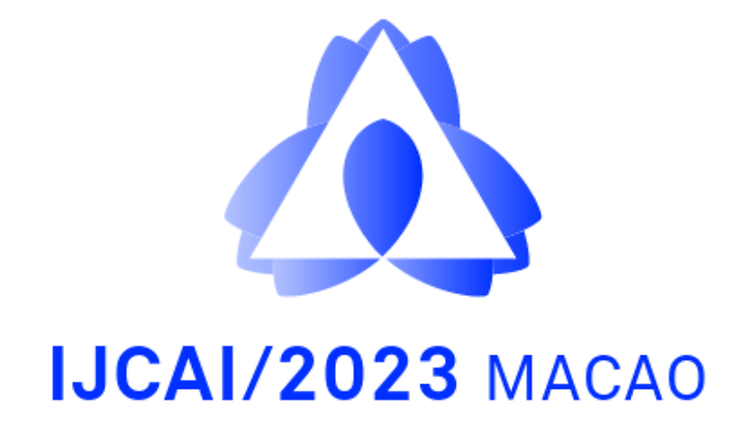
- 김유성 교수 연구실 (신원철 석사과정) IJCAI 2023 논문 게재 승인
- Computer Systems & Intelligence 연구실 (지도교수: 김유성) 신원철 석사과정 “Guide to Control: Offline Hierarchical Reinforcement Learning using Subgoal Generation for Long-Horizon and Complex Tasks” 논문이 인공지능 분야 최우수 학회 (BK IF=4) International Joint Conferences on Artificial Intelligence (IJCAI) 2023 에 게재 승인되었습니다. 강화학습은 주어진 환경과 상호작용하며 보상을 최대화하는 행동 정책을 스스로 배울 수 있는 만큼 자율주행, 공정 최적화, 로봇 모션 제어 등 많은 분야에서 활용될 수 있습니다. 그러나 비용 및 안전성 이슈가 발생할 수 있는 만큼 실제 환경에 바로 적용하기에는 어려움이 있습니다. 최근 환경과 상호작용 없이 기존의 운용되었던 로그 데이터만으로 학습이 가능한 '오프라인 강화학습' 기법이 큰 주목을 받고 있습니다. 초기 연구 단계인만큼 임무 과정이 길고 보상이 성공/실패로만 주어지는 환경에서는 학습이 어려운 한계가 있습니다. 본 연구에서는 길고 보상이 드문 임무를 보다 효과적으로 배울 수 있게 단계별 목표 (sub-goal) 를 생성하고 각 sub-goal 로 도달하는 계층적 오프라인 강화학습 기법을 제안합니다. 온라인 검증이 불가한 학습 조건에서 생성한 sub-goal 이 도달 가능함을 보장할 수 있어야 합니다. 이를 위해 비지도 방식으로 latent sub-goal prior 모델을 사전 학습 후 해당 prior 모델을 기반으로 도달 가능한 sub-goal 생성 모델을 설계하였습니다. 제안한 기법은 '4족 로봇 네비게이션', '로봇 팔 움직임 제어', 및 '키친 로봇 환경' 에서 기존 관련 연구들을 크게 상회하는 성능을 보여주었습니다. 김유성 | yskim525@skku.edu | CSI Lab. | https://csi-skku.github.io
-
- 작성일 2023-04-20
- 조회수 1669
-

- 허재필 교수 연구실, CVPR 2023 논문 3편 게재 승인
- 비주얼컴퓨팅연구실(지도교수: 허재필)의 논문 3편이 컴퓨터 비전 및 인공지능 분야의 Top-tier 학술대회인 IEEE/CVF Conference on Computer Vision and Pattern Recognition (CVPR) 2023에 게재 승인되었습니다. 논문 #1: “Disentangled Representation Learning for Unsupervised Neural Quantization” (인공지능학과 박사과정 노해찬, 인공지능학과 박사과정 현상익, 인공지능학과 박사과정 정우진) 논문 #2: “Query-Dependent Video Representation for Moment Retrieval and Highlight Detection” (인공지능학과 박사과정 문원준*, 인공지능학과 박사과정 현상익*) (* 공동1저자) 논문 #3: “Leveraging Hidden Positives for Unsupervised Semantic Segmentation” (인공지능학과 석박통합과정 성현석, 인공지능학과 박사과정 문원준, 인공지능학과 박사과정 이수빈) “Disentangled Representation Learning for Unsupervised Neural Quantization”에서는 비지도 양자화(unsupervised neural quantization)모델에서 역색인 구조(inverted file system)의 차벡터 인코딩(residual vector encoding)을 적용할 수 없다는 문제를 확인하였으며, 이를 해결하기 위해 새로운 네트워크 모듈을 제안하였습니다. 역색인 구조의 군집 센터(cluster center)의 정보를 네트워크의 잠재공간(latent space)에서 분리(disentangle)하여 양자화 코드북(quantization codebook)에 차벡터에 해당하는 정보만이 담기도록 설계하였습니다. 본 연구에서 제안된 네트워크는 비지도 양자화 분야의 기존 방법들을 크게 상회하는 성능을 달성하였습니다. "Query-Dependent Video Representation for Moment Retrieval and Highlight Detection " 논문에서는 비디오에서 사용자가 원하는 부분을 요약하고, 하이라이트 영상을 취득하는 문제를 다루고 있습니다. 구체적으로, 사용자가 원하는 부분은 문자 즉 텍스트로 입력을 받게 되는데 기존 최신 모델 구조인 트랜스포머 구조를 사용하는 논문들에서는 텍스트의 중요성을 크게 다루지 않고 있다는 문제를 제기하였습니다. 이러한 문제를 해결하기 위해, 해당 논문에서는 크게 세 가지 방법을 제안하고 있습니다. 먼저, cross-attention 구조를 인코딩 앞 단에 도입하여 비디오 추출 과정에서 텍스트 정보가 미치는 영향을 키워주었고, 텍스트와 비디오 사이에 연관성을 더 잘 학습하기 위해 거짓 텍스트-비디오 페어를 추가적으로 학습하였습니다. 또한, 모든 텍스트-비디오 페어는 각기 다른 정보를 다루고 있기에 하이라이트를 예측하는 예측기를 주어진 입력에 따라 변화하여 입력-의존적인 예측기를 사용하고자 하였습니다. 총 세 가지 데이터셋을 사용하여 실험하였고, 사용자 요청에 알맞은 영상을 추출하는 것과 하이라이트를 추출하는 두 가지 문제에서 모두 일관된 성능 향상을 가져오는 것을 확인하였습니다. “Leveraging Hidden Positives for Unsupervised Semantic Segmentation” 논문에서는 Unsupervised Semantic Segmentation를 위해 숨겨진 양성 샘플(hidden positive)을 찾아내 학습에 활용하는 새로운 방법을 제시하였습니다. 클래스 정보가 주어지지 않는 학습 상황에서 활용할 수 있을 만한 양성 샘플을 Global Hidden Positive(GHP)와 Local Hidden Positive(LHP)라는 두 가지 유형으로 정의하고, 이를 이용한 contrastive loss 설계와 그래디언트 전파(gradient propagation) 학습 전략으로 풍부한 의미 정보를 지역적 일관성을 유지하며 학습하였습니다. 이와 더불어 pretrained Vision Transformer(ViT)가 task-agnostic하다는 문제를 지적하여, 학습이 진행됨에 따라 좋은 quality를 가지게 되는 task-specific한 semantic information을 GHP를 정의하기 위한 추가적인 정보로 활용하였습니다. 제안된 기술은 Unsupervised Semantic Segmentation 분야에서 높은 성능을 달성하였습니다. [논문 #1 정보] Disentangled Representation Learning for Unsupervised Neural Quantization Haechan Noh, Sangeek Hyun, Woojin Jeong, Hanshin Lim, and Jae-Pil Heo IEEE/CVF Conference on Computer Vision and Pattern Recognition (CVPR), 2023 Abstract: The inverted index is a widely used data structure to avoid the infeasible exhaustive search. It accelerates retrieval significantly by splitting the database into multiple disjoint sets and restricts distance computation to a small fraction of the database. Moreover, it even improves search quality by allowing quantizers to exploit the compact distribution of residual vector space. However, we firstly point out a problem that an existing deep learning-based quantizer hardly benefits from the residual vector space, unlike conventional shallow quantizers. To cope with this problem, we introduce a novel disentangled representation learning for unsupervised neural quantization. Similar to the concept of residual vector space, the proposed method enables more compact latent space by disentangling information of the inverted index from the vectors. Experimental results on large-scale datasets confirm that our method outperforms the state-of-the-art retrieval systems by a large margin. [논문 #2 정보] Query-Dependent Video Representation for Moment Retrieval and Highlight Detection WonJun Moon, Sangeek Hyun, SangUk Park, Dongchan Park, and Jae-Pil Heo IEEE/CVF Conference on Computer Vision and Pattern Recognition (CVPR), 2023 Abstract: Recently, video moment retrieval and highlight detection~(MR/HD) are being spotlighted as the demand for video understanding is drastically increased. The key objective of MR/HD is to localize the moment and estimate clip-wise accordance level, i.e., saliency score, to the given text query. Although the recent transformer-based models brought some advances, we found that these methods do not fully exploit the information of a given query. For example, the relevance between text query and video contents is sometimes neglected when predicting the moment and its saliency. To tackle this issue, we introduce Query-Dependent DETR~(QD-DETR), a detection transformer tailored for MR/HD. As we observe the insignificant role of a given query in transformer architectures, our encoding module starts with cross-attention layers to explicitly inject the context of text query into video representation. Then, to enhance the model's capability of exploiting the query information, we manipulate the video-query pairs to produce irrelevant pairs. Such negative~(irrelevant) video-query pairs are trained to yield low saliency scores, which in turn, encourages the model to estimate precise accordance between query-video pairs. Lastly, we present an input-adaptive saliency predictor which adaptively defines the criterion of saliency scores for the given video-query pairs. Our extensive studies verify the importance of building the query-dependent representation for MR/HD. Specifically, QD-DETR outperforms state-of-the-art methods on QVHighlights, TVSum, and Charades-STA datasets. [논문 #3 정보] Leveraging Hidden Positives for Unsupervised Semantic Segmentation Hyun Seok Seong, WonJun Moon, SuBeen Lee, and Jae-Pil Heo IEEE/CVF Conference on Computer Vision and Pattern Recognition (CVPR), 2023 Abstract Dramatic demand for manpower to label pixel-level annotations triggered the advent of unsupervised semantic segmentation. Although the recent work employing the vision transformer (ViT) backbone shows exceptional performance, there is still a lack of consideration for task-specific training guidance and local semantic consistency. To tackle these issues, we leverage contrastive learning by excavating hidden positives to learn rich semantic relationships and ensure semantic consistency in local regions. Specifically, we first discover two types of global hidden positives, task-agnostic and task-specific ones for each anchor based on the feature similarities defined by a fixed pre-trained backbone and a segmentation head-in-training, respectively. A gradual increase in the contribution of the latter induces the model to capture task-specific semantic features. In addition, we introduce a gradient propagation strategy to learn semantic consistency between adjacent patches, under the inherent premise that nearby patches are highly likely to possess the same semantics. Specifically, we add the loss propagating to local hidden positives, semantically similar nearby patches, in proportion to the predefined similarity scores. With these training schemes, our proposed method achieves new state-of-the-art (SOTA) results in COCO-stuff, Cityscapes, and Potsdam-3 datasets. 허재필 | jaepilheo@skku.edu | 비주얼컴퓨팅 Lab | https://sites.google.com/site/vclabskku/
-
- 작성일 2023-04-18
- 조회수 1858
-
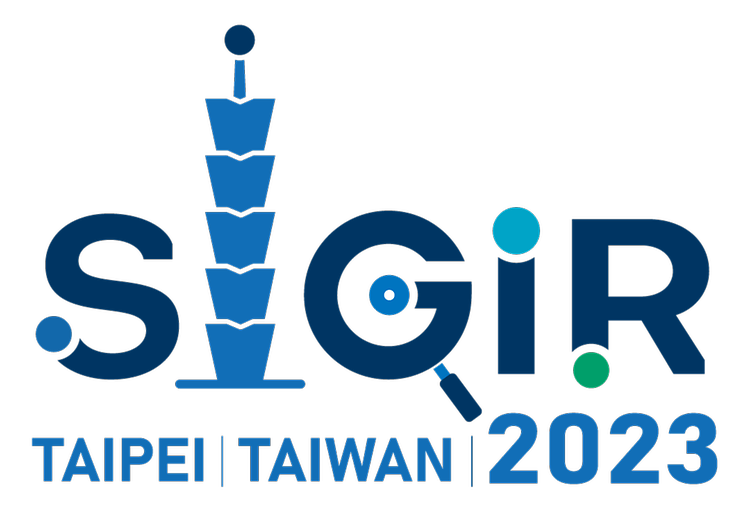
- 이지형 교수 연구실, SIGIR 2023 논문 게재 승인
- 정보 및 지능 시스템 연구(지도교수: 이지형)의 양희윤(인공지능학과 석사과정), 최윤석(소프트웨어학과 박사과정), 김가형(인공지능학과 석사과정)의 “LOAM: Improving Long-tail Session-based Recommendation via Niche Walk Augmentation and Tail Session Mixup” 논문이 인공지능 및 정보검색 분야의 Top-tier 국제학술대회 (BK21 CS IF=4)인 SIGIR(The 46th International ACM SIGIR Conference on Research and Development in Information Retrieval) 2023에 최종 논문 게재가 승인되어 7월에 발표될 예정입니다. 본 연구에서는 추천 시스템 연구 분야 중 하나인 세션 기반 추천 시스템에서 데이터셋의 롱테일 분포로 인해 발생하는 롱테일 샘플의 추천 성능 저하 문제를 해결하기 위해 두 가지 증강기법을 제안합니다. 데이터셋의 특성인 순차성과 함께 등장하는 아이템(Sequential, item co-occurrence)등을 고려하여 기존의 학습 샘플들과 유사하면서도 다양성이 있는 증강샘플을 생성하기 위해 세션들로 이루어진 그래프를 순회하는 입력 데이터 증강 기법, NWA(Niche Walk Augmentation)를 제안합니다. 또한, 모델의 다양한 아이템 예측과 일반화(generalization)를 위해 세션의 특성(representation)을 추출한 뒤에 mixup 기반의 증강을 한 번 더 진행하였습니다. 실험 결과, 기존 제안되었던 세션 기반 추천 모델에 증강 기법을 함께 사용했을 때, 전체 샘플에 추천 정확도 저하를 최소화하면서 다양성을 향상시켰고, 롱테일 샘플에 대해 향상된 정확도와 다양성을 달성하였습니다. [논문] Heeyoon Yang, YunSeok Choi, Gahyung Kim, and Jee-Hyong Lee. “ LOAM: Improving Long-tail Session-based Recommendation via Niche Walk Augmentation and Tail Session Mixup”, In Proceedings of 46th International ACM SIGIR Conference on Research and Development in Information Retrieval (SIGIR 2023), July 2023. [Abstract] Session-based recommendation aims to predict the user’s next action based on anonymous sessions without using side information. Most of the real-world session datasets are sparse and have long-tail item distribution. Although long-tail item recommendation plays a crucial role in improving user satisfaction, only a few methods have been proposed to take the long-tail session recommendation into consideration. Previous works in handling data sparsity problems are mostly limited to self-supervised learning techniques with heuristic augmentation which can ruin the original characteristic of session datasets, sequential and co-occurrences, and make noisier short sessions by dropping items and cropping sequences. We propose a novel method, LOAM, improving LOng-tail session-based recommendation via niche walk Augmentation and tail session Mixup, that alleviates popularity bias and enhances long-tail recommendation performance. LOAM consists of two modules, Niche Walk Augmentation (NWA) and Tail Session Mixup (TSM). NWA can generate synthetic sessions considering long-tail distribution which are likely to be found in original datasets, unlike previous heuristic methods, and expose a recommender model to various item transitions with global information. This improves the item coverage of recommendations. TSM makes the model more generalized and robust by interpolating sessions at the representation level. It encourages the recommender system to predict niche items with more diversity and relevance. We conduct extensive experiments with four real-world datasets and verify that our methods greatly improve tail performance while balancing overall performance.
-
- 작성일 2023-04-07
- 조회수 1726
-
- 박은병, 고종환 교수 연구팀 CVPR 2023 논문 2편 게재 승인
- 인공지능학과 박은병, 고종환 교수 연구팀의 논문 2편이 인공지능 및 컴퓨터비전 분야 최우수학술대회 중 하나인 CVPR 2023 (The IEEE/CVF Conference on Computer Vision and Pattern Recognition)에 게재 승인되었다. 학회는 2023년 6월 캐나다 벤쿠버에서 열릴 예정이다. 논문 #1: “Masked Wavelet Representation for Compact Neural Radiance Fields”, 노다니엘*, 이병현*, 남승태, 이주찬, 고종환^, 박은병^ (*공동 1저자, ^공동 교신저자) 연구 홈페이지: https://daniel03c1.github.io/masked_wavelet_nerf 코드 링크: https://github.com/daniel03c1/masked_wavelet_nerf [그림1] Masked Wavelet Representation [그림 2] 기존 방법론과의 성능 비교 박은병, 고종환 교수 공동 연구팀(인공지능학과 석사과정 졸업 및 현 KT AI2XL 재직 노다니엘/석사과정 이병현 학생 공동 1저자, 석사과정 남승태 학생 공동저자, 석박통합과정 이주찬 학생 공동저자)의 논문 “Masked Wavelet Representation for Compact Neural Radiance Fields”는 이산 웨이블렛 변환을 이용한 주파수 기반의 격자구조 신경 복사 필드를 제안하였다. 더 나아가 주파수 영역에서 효율적으로 학습이 가능한 마스크를 사용하여 신경 복사 필드를 압축함으로써 많은 메모리를 요구하는 기존 격자구조 기반의 신경 복사 필드 방법론들의 단점을 극복했다. 논문 #2: “SMPConv: Self-moving Point Representations for Continuous Convolution”, 김상현, 박은병 코드 링크: https://github.com/sangnekim/SMPConv [그림 3] SMPConv 와 기존 방법론과의 비교 박은병 교수 연구팀(석사과정 김상현 학생 1저자)의 논문 “SMPConv: Self-moving Point Representations for Continuous Convolution”은 기존 다층 퍼셉트론(MLPs)을 활용한 연속 합성 곱(Continuous Convolution) 구현의 연산량과 구조적 문제를 해결하기 위한 스스로 움직이는 포인트 표현과 보간법을 제안하였다. 제안된 방법은 다양한 실험 환경에서 선행 연구보다 효율성과 우수성을 입증하였으며, 영상 처리 분야에 광범위하게 사용될 수 있을 것으로 기대된다.
-
- 작성일 2023-03-23
- 조회수 2003
-
- 박호건 교수 연구실(기계학습, 데이터마이닝 연구실)의 추천 시스템 연구The Web Conference (WWW) 2023 논문 게재 승인
- LearnData Lab(기계학습/데이터마이닝) 연구실(지도교수: 박호건, https://learndatalab.github.io)의 정희수 학생(석사과정)과 박호건 교수(교신저자)가 제출한 “Dual Policy Learning for Aggregation Optimization in Graph Neural Network-based Recommender Systems” 논문이 웹/데이터 마이닝 분야 최우수 학회 The Web Conference(WWW) 2023 (https://www2023.thewebconf.org) (BK IF=4)에 게재 승인되었고, 2023년 5월 미국 텍사스에서 발표될 예정입니다. 본 논문은 대부분의 최신 추천 시스템의 근간이 되는 그래프 신경망(Graph neural networks; GNN)기반 딥러닝 모델에서 사용 가능한 강화 학습 기반 성능 개선 학습 방법을 제안합니다. 기존GNN 기반 추천 시스템은 멀리 떨어진 이웃의 정보를 집계하여 사용자와 항목 간의 복잡한 고차원적 연결성을 포착하는 장점이 있지만, 사용자와 추천 상품의 이질적인 특성으로 인해 성능 향상에 한계가 있었습니다. 본 논문에서는 추천 시스템을 위한 새로운 강화 학습 기반 메시지 전달 프레임워크인 DPAO(Dual Policy learning framework for Aggregation Optimization)를 제안하며, 이중 정책 학습을 사용하여 사용자 및 상품에 대한 고차 연결을 적응적으로 결정합니다. 제안한 프레임워크는 Amazon, Yelp 포함 6개의 실제 상품 추천 데이터 세트에서 평가하였습니다. 그 결과 본 논문이 제안한 프레임워크가 최근 발표된 GNN기반 추천 시스템 모델을 크게 향상시켜, 대표적인 추천 시스템 평가 지표인nDCG와 Recall에서 각각 최대 63.7%와 42.9%까지 향상시키는 것으로 나타났습니다. 구현 코드와 논문은 본 연구실 홈페이지(https://learndatalab.github.io)에서 확인할 수 있습니다. [논문 정보] Heesoo Jung, Sangpil Kim, Hogun Park. Dual Policy Learning for Aggregation Optimization in Recommender Systems, In Proceedings of the ACM 32nd Web Conference: WWW 2023, Austin, USA, 2023. [Abstract] Graph Neural Networks (GNNs) provide powerful representations for recommendation tasks. GNN-based recommendation systems capture the complex high-order connectivity between users and items by aggregating information from distant neighbors and can improve the performance of recommender systems. Recently, Knowledge Graphs (KGs) have also been incorporated into the user-item interaction graph to provide more abundant contextual information; they are exploited to address cold-start problems and enable more explainable aggregation in GNN-based recommender systems (GNN-Rs). However, due to the heterogeneous nature of users and items, developing an effective aggregation strategy that works across multiple GNN-Rs, such as LightGCN and KGAT, remains a challenge. In this paper, we propose a novel reinforcement learning-based message passing framework for recommender systems, which we call DPAO (Dual Policy learning framework for Aggregation Optimization). This framework adaptively determines high-order connectivity to aggregate users and items using dual policy learning. Dual policy learning leverages two Deep-Q-Network models to exploit the user- and item-aware feedback from a GNN-R and boost the performance of the target GNN-R. Our proposed framework was evaluated with both non-KG-based and KG-based GNN-R models on six real-world datasets, and their results show that our proposed framework significantly enhances the recent base model, improving nDCG and Recall by up to 63.7% and 42.9%, respectively.
-
- 작성일 2023-03-02
- 조회수 1834
-
- 고영중 교수 자연어처리연구실, WSDM 2023 국제 학술대회 논문 게재 승인
- 자연어처리연구실 박선영 석사과정(인공지능학과), 최규리, 유하은 석사과정(소프트웨어학과)의 “Never Too Late to Learn: Regularizing Gender Bias in Coreference Resolution” 논문이 웹 정보 검색 및 데이터 마이닝 분야의 top-tier 국제 학술대회(BK21 CS IF=3)인 WSDM (The 16th ACM International Conference on Web Search and Data Mining) 2023에 최종 논문 게재가 승인되어 2월에 발표될 예정입니다. 본 연구에서는 자연어 이해 태스크 중 하나인 상호 참조 해결로 언어 모델이 학습한 성 고정관념(stereotype)과 편향성(skew)을 완화하고 분석합니다. 사전학습 언어모델은 사전학습 과정에서 언어 이해 능력을 학습할 뿐만 아니라 대용량 코퍼스에 내재된 고정관념과 편향성 역시 학습합니다. 언어모델의 성 편견을 완화하고자 하는 기존 방법들은 편향성 문제 해결에 초점을 맞추고, 고정관념 학습 문제를 해결하지 못하거나 기존 사전학습 언어모델의 언어 이해 능력을 저하시키는 문제 등이 있었습니다. 본 논문에서는 이를 해결하기 위해 고정관념 중화(stereotype neutralization) 기법과 탄력적 변수 강화(elastic weight consolidation) 기법을 제시합니다. 대명사 참조 데이터셋을 이용한 실험 결과, 제안 기법이 사전학습 언어 모델의 성 고정관념과 편향성 문제를 효과적으로 해결한 것을 확인할 수 있었습니다. [논문] Sunyoung Park, Kyuri Choi, Haeun Yu, Youngjoong Ko, “Never Too Late to Learn: Regularizing Gender Bias in Coreference Resolution.”, Proceedings of the 16th ACM International Conference on Web Search and Data Mining (WSDM 2022), February 2023. Abstract: Leveraging pre-trained language models (PLMs) as initializers for efficient transfer learning has become a universal approach for text-related tasks. However, the models not only learn the language understanding abilities but also reproduce prejudices for certain groups in the datasets used for pre-training. Recent studies show that the biased knowledge acquired from the datasets affects the model predictions on downstream tasks. In this paper, we mitigate and analyze the gender biases in PLMs with coreference resolution, which is one of the natural language understanding (NLU) tasks. PLMs exhibit two types of gender biases: stereotype and skew. The primary causes for the biases are the imbalanced datasets with more male examples and the stereotypical examples on gender roles. While previous studies mainly focused on the skew problem, we aim to mitigate both gender biases in PLMs while maintaining the model's original linguistic capabilities. Our method employs two regularization terms, Stereotype Neutralization (SN) and Elastic Weight Consolidation (EWC). The models trained with the methods show to be neutralized and reduce the biases significantly on the WinoBias dataset compared to the public BERT. We also invented a new gender bias quantification metric called the Stereotype Quantification (SQ) score. In addition to the metrics, embedding visualizations were used to interpret how our methods have successfully debiased the models.
-
- 작성일 2023-03-02
- 조회수 1691




